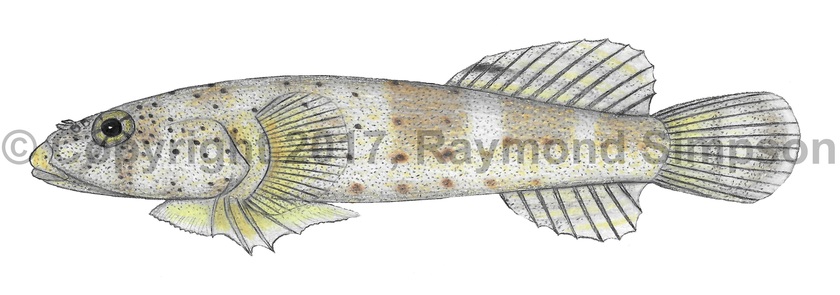
Common Name
Stippled Skilletfish
Year Described
Poey, 1876
Identification
Dorsal Fin: 11-12
Anal Fin: 7-8
Pectoral Fin: 19-22 (usually 21)
Head depressed and wide. Body tapering and becoming laterally compressed posteriorly. Sensory papillae on head poorly developed (none on top lip or snout). Eyes relatively large. Rear nostril with two prominent flaps. Mouth terminal and small. Top lip broad at front, thin on sides. Top jaw with a large patch of conical teeth at front and a row of teeth on either side. Lower jaw with 4-6 pairs of incisors on front and a single row on either side. Dorsal and anal fins placed far rearward. Tail long with rounded margin. Pectoral fin with large fleshy pad that has a free rear edge. Pelvic disk well developed with 6 rows of papillae anteriorly, 4 rows posteriorly and 2 patches (1-2 rows each) in the center of the disk. Anus midway between disk and anal fin origin. Scales and lateral line absent.
Color
Body pale whitish to sand colored with tiny olive speckles and randomly placed black spots widely scattered on head and body. Body can be darkened or lightened depending on substrate. Can variably express darker blotching and banding, especially on the rear of body. A large dark band under the dorsal fin is often contrasting with the paler body anterior to it. Faint dark bands radiate from eyes. A dark blotch on anterior margin of dorsal fin. Other fins with spots along the finrays and membranes ranging from clear to dusky.
Size
Maximum size to 64mm SL.
Habitat
Shallow (<3m) and clear waters on limestone ledges and under stones or rubble.
Range
Bahamas to the Lesser Antilles. Insular locations only.
References
Schultz, L.P. 1944. A revision of the American clingfishes, family Gobiesocidae, with descriptions of new genera and forms. Proceedings of the United States National Museum. Vol 96 (3187): 47-77.
Other Notes
The Caribbean insular “Skilletfish” that replaces Gobiesox strumosus and G. barbatulus around most Caribbean islands.